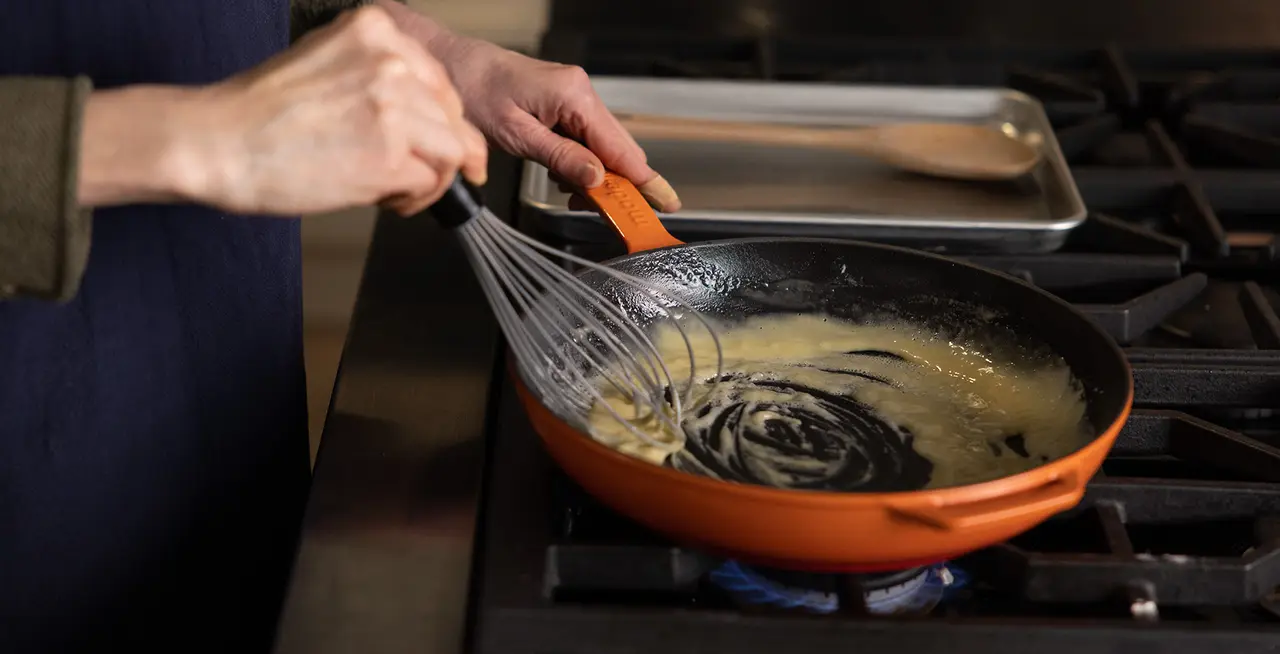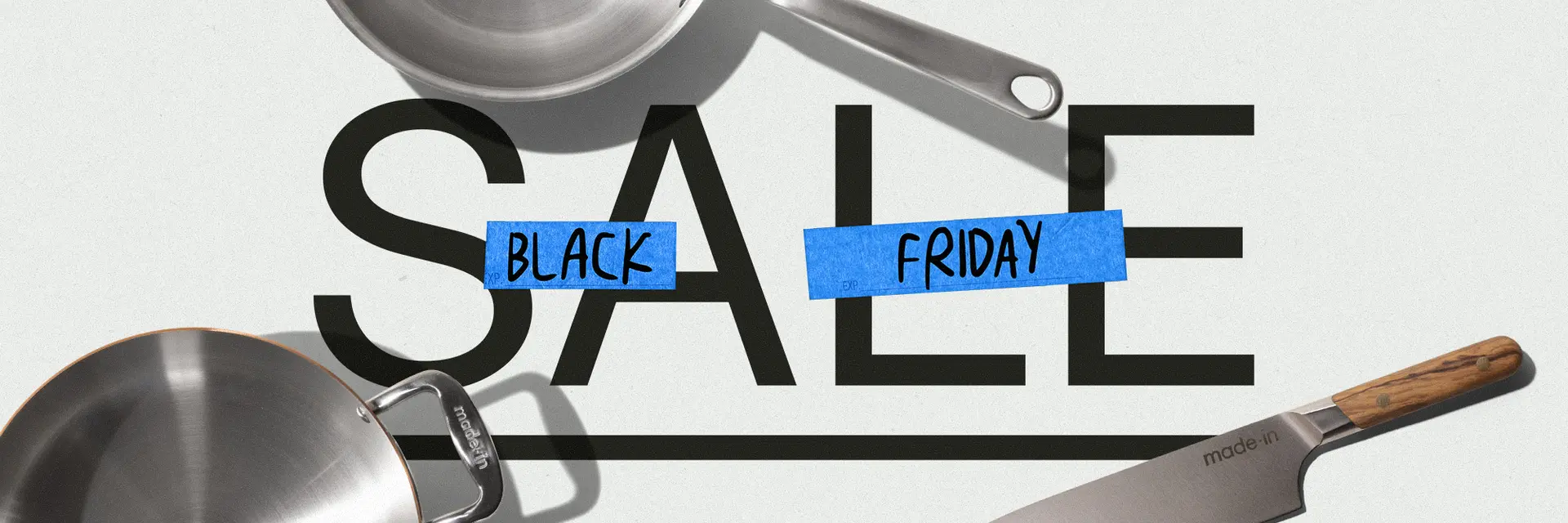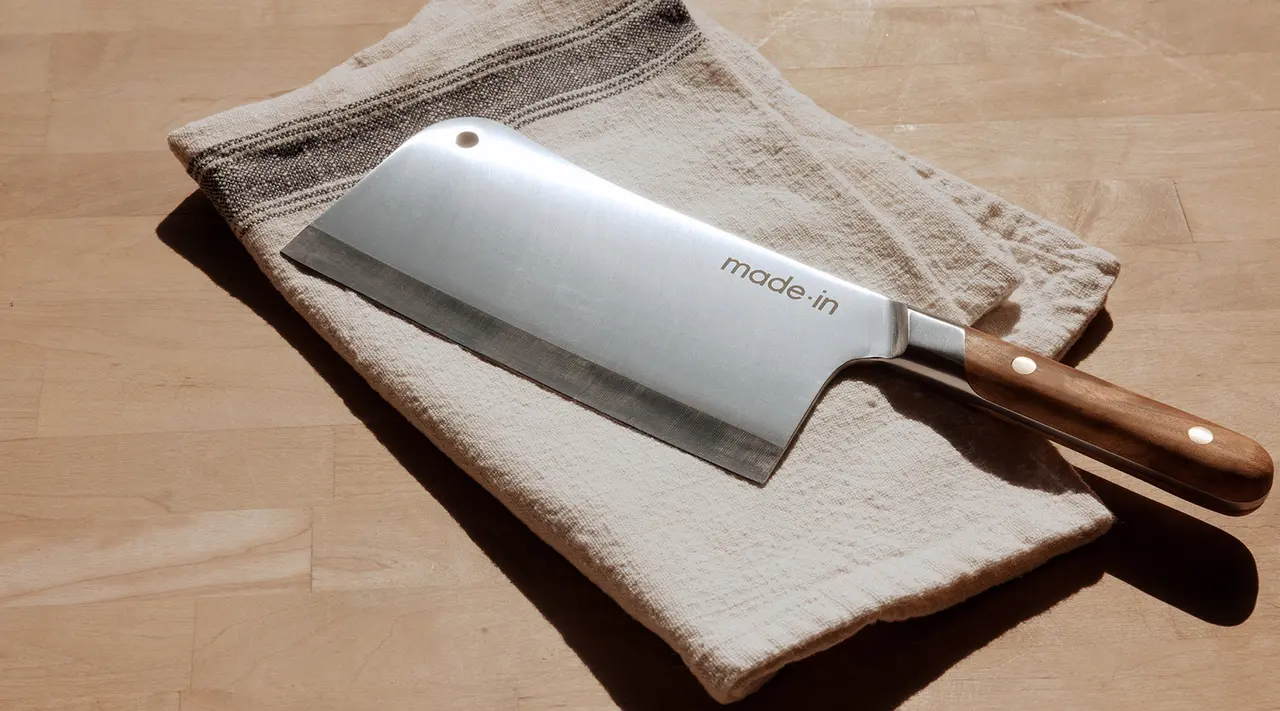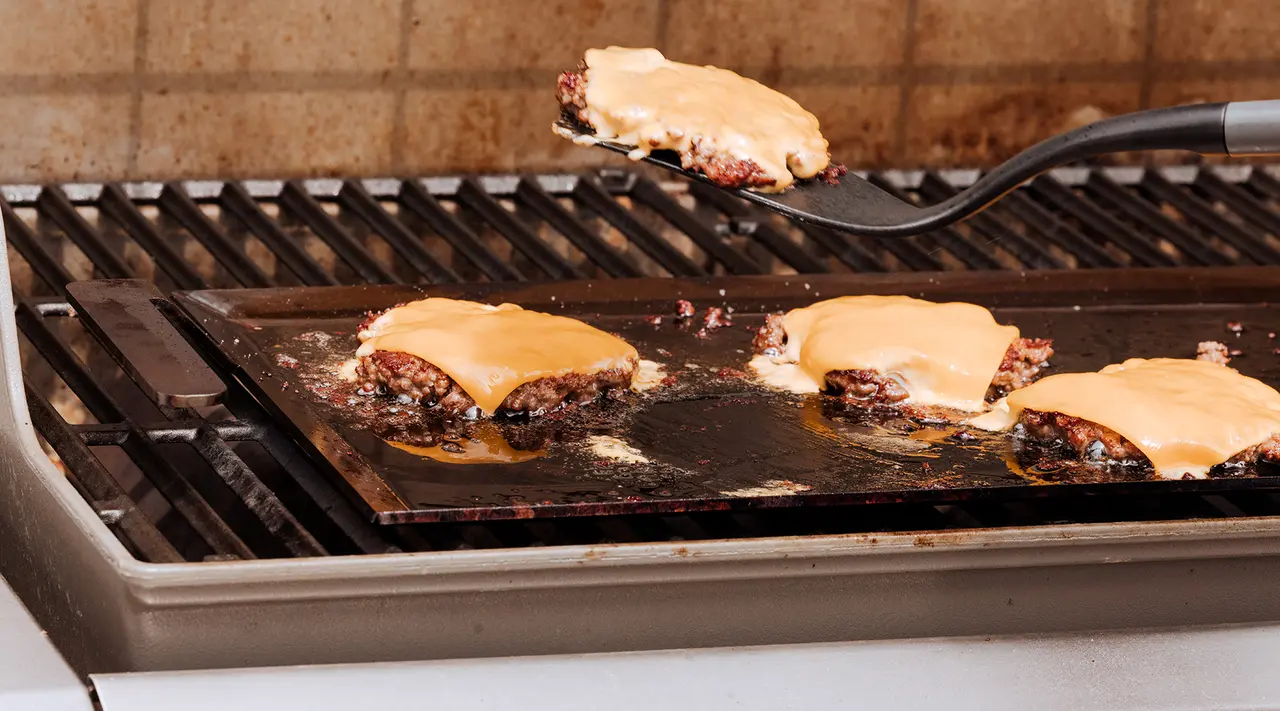A roux is a simple mixture that can do amazing things for your sauces and stews, with only two ingredients and minimal effort. Once you learn the technique and how to apply it, you can riff on it endlessly. Whether you’re aiming for the creamiest mac and cheese or the perfect Thanksgiving gravy, in this article, we give you the tools you need to get your roux right every time.
What Is a Roux?
Simply put, a roux is a 1:1 mixture of fat and flour. That may not seem special, and on its own, it’s not. However, when combined with the right ingredients, it serves as the basis for some of the most delicious sauces, whether that’s French mother sauces, gravy, or even stews like gumbo, etouffee, chowder, and more.
While butter is typically used, other fats like oil, lard, or even pan drippings can be a great substitute. In gravy for instance, there is simply no flavor substitute for turkey drippings.
When Should I Use a Roux?
Roux can be used whenever you want to create a thick, uniform sauce. Because the fat and flour lump together, flavor is dispersed evenly throughout your liquid.
There are different kinds of roux, each of which have different applications. A blonde or “white” roux is often used in chowders, mac and cheese, or bechamel, to match the color of the sauce. Here the flour is not cooked down long enough to turn it brown, but just to eliminate the raw taste of it.
Alternatively, to achieve a brown or dark roux, you simply cook the mixture longer. Toasting the flour yields a nutty, aromatic flavor, similar to brown butter. Darker roux can be found in dishes like Thanksgiving gravy, jambalaya, etouffee, and gumbo.
Is There a Pan That’s Best for Roux?
We highly recommend a Saucier, however a Dutch Oven will also do the trick. You need a pan that’s both deep enough to hold plenty of liquid, but also has a nice surface to cook the flour and fat in as well. A Saucier allows you to stir without much force, and helps your ingredients cook evenly, ensuring nothing gets stuck to the sides or in corners. For these reasons, it’s our go-to pan whenever we’re making a roux.
How to Make a Roux
Follow these simple steps to make a roux.
- Melt 1 part fat (typically butter) and 1 part flour in a Stainless Clad Saucier. A good amount here is about 4 tablespoons of each.
- Stir the butter and flour together until they begin to lump together, forming a slightly solid mixture.
- Let cook for 3 to 5 minutes for a light roux. If making a brown roux, let cook for 6 to 7 minutes. If making a dark roux let cook until very dark about 8 to 10 minutes.
- No matter what kind of roux you’re making, let it cool slightly before adding milk, stock, or water to create a sauce. Then stir or whisk together and simmer until your sauce reaches its desired thickness.
What to Make with a Roux
Now that you know how to make a roux, check out this recipe for Brisket Mac and Cheese which utilizes this technique to create a delicious, creamy, smooth cheese sauce that will beat the boxed version any day.
Roux’s are also commonly found in etouffee, gumbo, jambalaya, and as we mentioned, gravy.
























